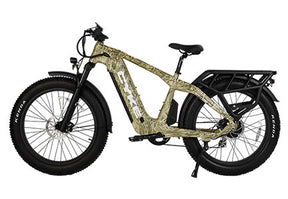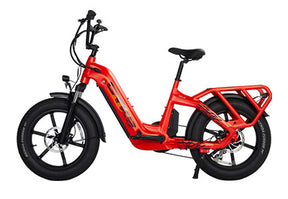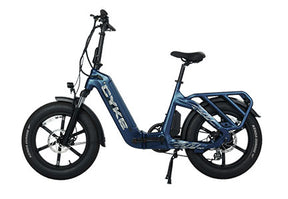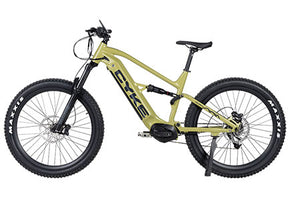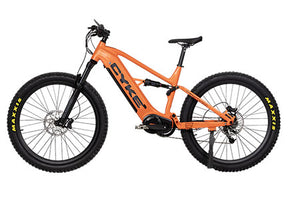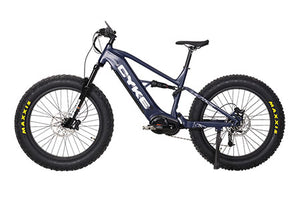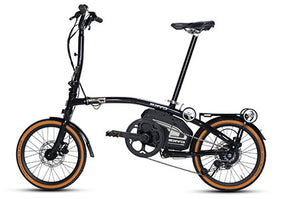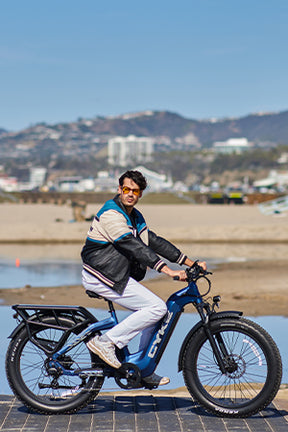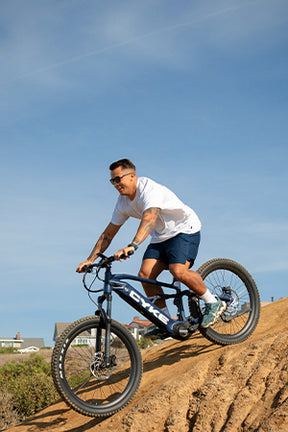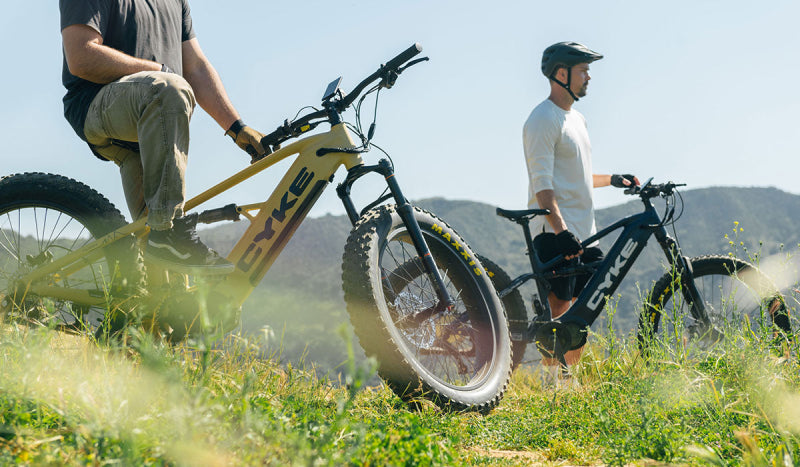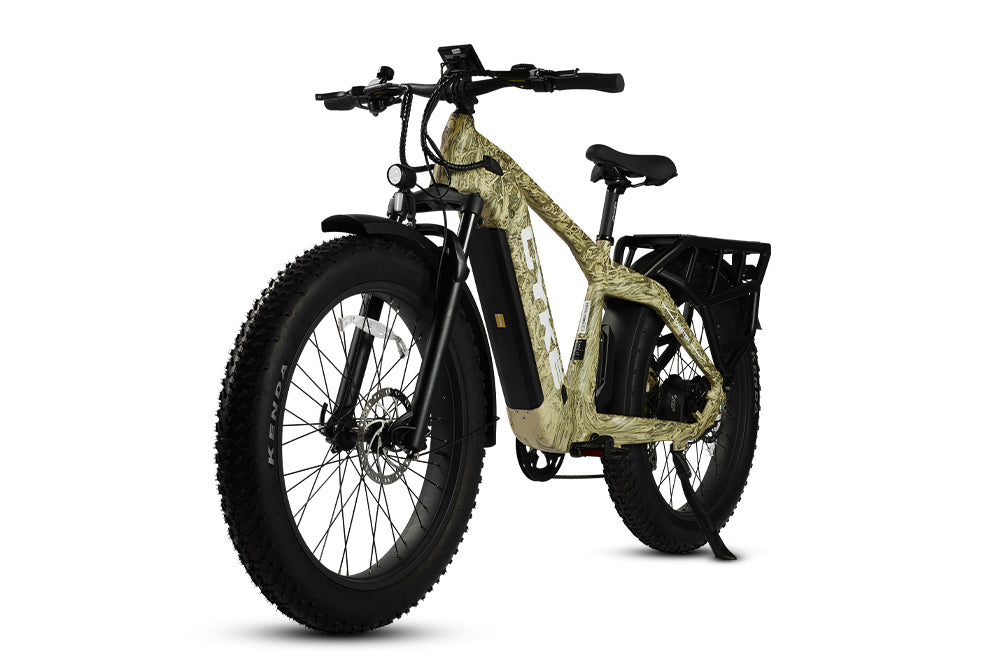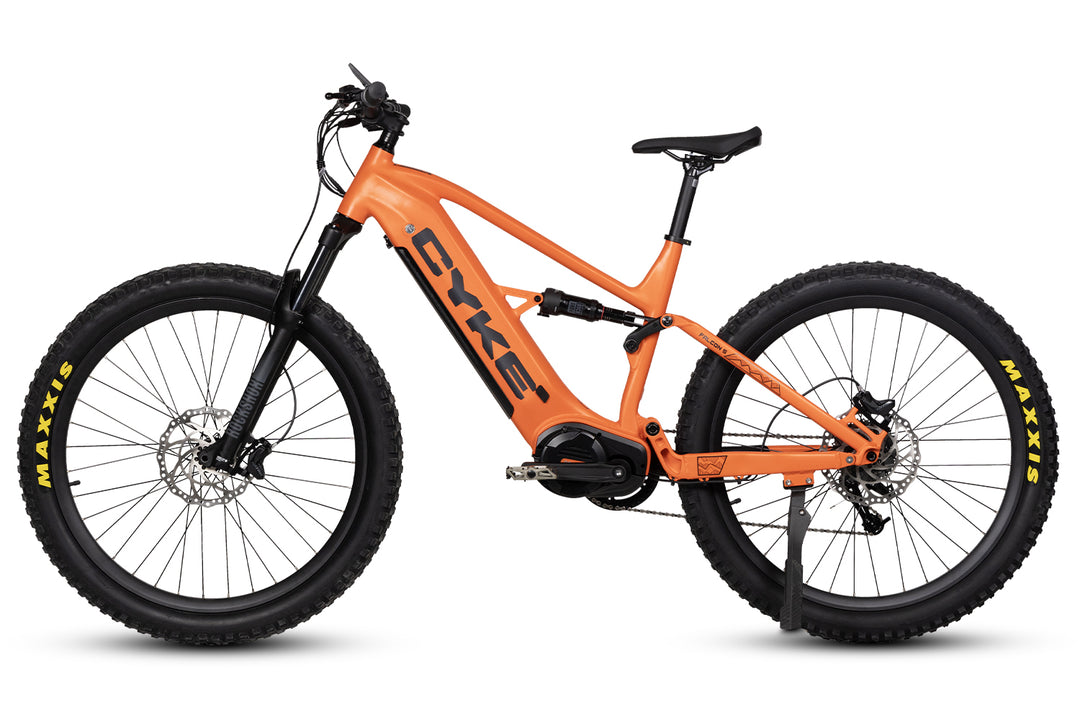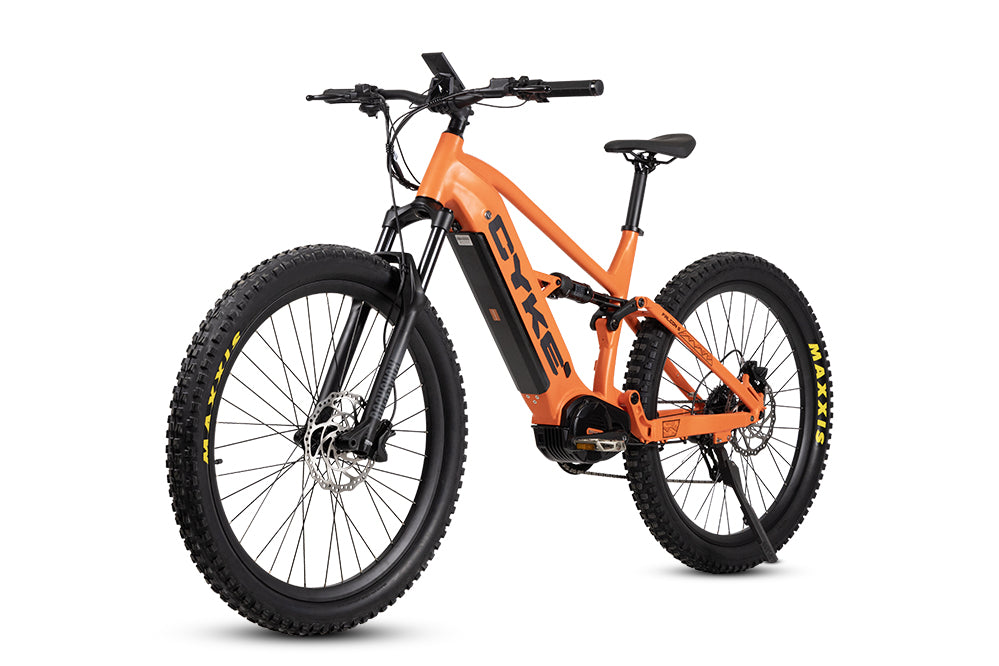Safety First: Essential Riding Tips for New E-Bike Owners
Getting your first electric bike feels exciting. You have a new way to travel that's faster than walking and more fun than driving.
But as with any vehicle, safety comes first. Before you hit the road, learning proper e-bike safety tips will protect you and make every trip more enjoyable.
Electric bikes are different from regular bikes. They have motors that assist you in pedaling. They can go faster and feel heavier. This means you need to learn new skills and follow important safety rules.
This e-bike beginner guide helps new owners like you learn key steps so that you can start your riding journey with confidence.
Understanding Your CYKE E-Bike
CYKE e-bikes feature advanced technology designed for both performance and safety. That’s why, start by knowing your eBike inside out before your first ride. This builds confidence and prevents mistakes.
Getting Familiar with Controls and Features
CYKE Display Systems:
Your CYKE e-bike features sophisticated display technology that varies by model. For instance, the Cheetah hunting eBike includes a 3.5-inch color matrix HMI display, while Falcon models feature 4-inch TFT color screens with Bluetooth connectivity and IP66 weatherproofing.
This screen shows your speed, how much battery is left, and how far you’ve gone. Sit on the bike and try pressing each button while stationary. Understand what each does before you start moving. Knowing where everything is will help you react faster in real situations.
Power Management Controls:
The power button activates your bike's electrical systems. Locate the assist level selector, typically positioned near the handlebars for easy access while riding. CYKE bikes offer 5 pedal-assist levels, allowing precise power customization.
Brake Safety Integration:
CYKE features TEKTRO hydraulic disc brakes across its lineup. These systems include power cut-off sensors that immediately stop motor assistance when braking. Squeeze the brake levers softly to feel how they grip. If you ride the Cheetah, its brakes have 180mm rotors, which help you stop fast even with a heavy load. Check your brakes before every ride. Loose or weak brakes can make riding an e-bike safely harder.
Proper Use of Pedal-Assist and Throttle
CYKE e-bikes make riding easier with pedal-assist and throttle. Pedal-assist is like having a super-strong friend push you while you pedal. On the Cheetah, you get 105 adaptive ride modes that adjust to how you pedal. The Falcon S full suspension eMTB has five levels of pedal-assist, controlled by a torque sensor for smooth power.
Start with the lowest assist level. This gives you gentle help and lets you get used to how the bike feels. Higher assist levels provide more power but can feel overwhelming at first. As you gain confidence, you can try stronger settings.
The throttle is different. It provides instant acceleration without the need for pedaling. Start with gentle pressure. The bike can accelerate quickly with throttle power. Practice in a safe area before riding in traffic.
Essential Safety Gear for E-Bike Riders
You wouldn’t ride a motorcycle without protective gear, and the same thinking applies to e-bikes. While they may feel like regular bicycles, their higher speeds mean you need to take extra precautions.
Helmets and Protective Gear
A helmet is the most important piece of safety equipment. Choose a helmet that fits properly and meets electric bike safety standards. Look for certifications like CPSC. The helmet should sit level on your head and not move when you shake it. Make sure your helmet is comfortable enough to wear on every ride. An uncomfortable helmet might tempt you to skip it.
Consider additional protective gear based on your riding style. Knee and elbow pads help during falls. Gloves improve your grip and protect your hands. Adjust the straps and padding until it feels good. If you ride fast or on rough terrain, more protection is worth considering.
Reflective Clothing and Lights
Being visible to other road users keeps you safe. Bright, reflective clothing helps drivers see you during the day and night. Light-colored clothing works better than dark colors. Reflective strips or vests add extra visibility.
Also, install front and rear lights on your bike. A white front light shows the path and a red rear light warns drivers behind. Use lights during dawn, dusk, and overcast conditions.
Consider additional lighting options. Spoke lights make your wheels visible from the side. Helmet lights help you see better and make you more noticeable. Some riders use light-up vests or backpacks for extra visibility.
Riding Best Practices for New Owners
Developing good riding habits keeps you safe and makes cycling more enjoyable. These e-bike safety tips focus on how to ride responsibly and handle different situations you'll encounter on the road.
Road Awareness and Traffic Safety
- Ride as if other road users haven’t seen you.
- Keep a safe distance from vehicles, avoid blind spots, and use hand signals when turning.
- Watch for hazards like potholes, wet surfaces, and gravel.
- Avoid using phones or headphones that block important sounds.
- Ride with traffic. Use bike lanes when available, but watch for pedestrians and opening car doors.
- Don't ride too close to the curb where debris collects.
- Make yourself visible to drivers while maintaining a safe space.
- Be extra careful at intersections. These are where most bike accidents happen.
- Make eye contact with drivers when possible.
- Slow down and look both ways, even when you have the right of way.
Riding Techniques for Stability and Control
- Start in a quiet area away from traffic to learn how your e-bike accelerates, brakes, and turns.
- Keep your weight centered, especially when starting.
- Keep a firm grip on the handlebars, especially when the motor starts helping.
- Start pedaling gently to get smooth acceleration.
- For hills, shift to low gear or use assist.
- Brake early on downhills. Squeeze brakes evenly to avoid skids.
- In wet weather, go slower. Tires slip on water.
- Learn to brake properly with your heavier e-bike. Use both front and rear brakes evenly.
- E-bikes take longer to stop than regular bikes. Leave extra space between you and obstacles. Practice emergency stopping in a safe area.
- Take turns more slowly than you would on a regular bike. E-bikes are heavier and can be harder to control in sharp turns. Lean your body slightly into turns while keeping the bike more upright. This gives you better traction and control.
Maintenance for Safe Riding
Regular maintenance keeps your e-bike running safely and efficiently. A well-maintained bike is less likely to break down or cause accidents.
Pre-Ride Safety Checks
- Look at your tires for proper inflation and any damage. Spin the wheels to make sure they turn freely.
- Test your brakes by squeezing the levers. They should feel firm and stop the bike quickly.
- Check that brake pads aren't worn down too much. Look at your chain to make sure it's not too loose or dirty.
- Verify that all bolts are tight, especially on the handlebars, seat, and wheels. Loose parts can cause crashes. If something feels different or makes unusual noises, investigate before riding.
- Check your lights and reflectors to ensure they're clean and working.
- Verify that your battery has enough charge for your planned trip.
- Make sure your seat and handlebars are adjusted correctly for comfortable riding.
Battery Maintenance
- Keep the battery charged, avoid frequent full drains.
- Store between 50°F and 75°F at about 30–70% charge when not in use.
- Clean battery contacts regularly.
- Remove and inspect the battery for corrosion or damage.
If you notice problems, have a professional look at it. Battery issues can be dangerous if not handled properly.
Brake Care
- Check brake pads regularly and replace them when worn.
- Keep cables adjusted and lubricated.
- Clean the brake rotors or discs with isopropyl alcohol and a clean cloth.
- Investigate and address any unusual noises or vibrations during braking.
Have your e-bike serviced by a professional at least once a year. They can check electrical systems, adjust components, and spot problems you might miss.
Conclusion
Riding an e-bike safely requires learning new skills and developing good habits. Understanding your bike's features, wearing proper safety gear, following traffic rules, and maintaining your bike properly all contribute to safe and enjoyable rides.
These e-bike safety tips are not just for beginners; they’re habits that will serve you for years to come.
Start slow, stay alert, and enjoy the journey. When you combine the thrill of riding with smart safety practices, every trip becomes not just a ride, but a safe adventure.
